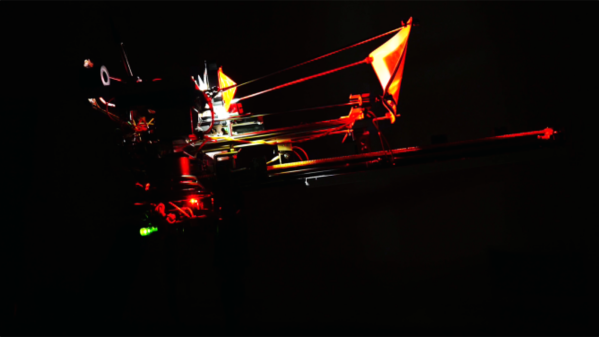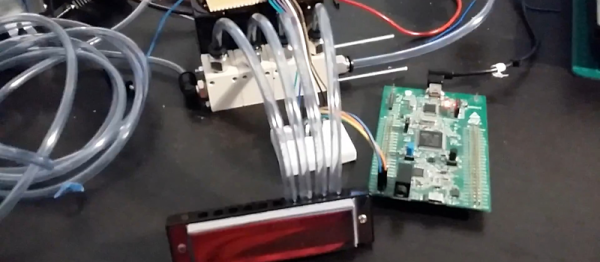Hackaday.io user [eagleisinsight] is a high-school hacker whose dreams of becoming a Theremin virtuoso were thwarted by the high cost of a commercial instrument. His response is the Minimin, an affordable Theremin design using a 555 and an ATMega328.
The 555 is configured as an astable oscillator running at about 5MHz and with a loop antenna attached to its timing capacitor. The parasitic capacitance of the musician’s hand against the antenna varies the frequency of the oscillation, as you would expect. In a classic Theremin the signal from the 555 would be mixed with the output from a fixed 5MHz oscillator and the sound would be generated from the difference between the two oscillators, but in [eagleisinsight]’s design the 555 clocks the ATMega328’s timer. The processor can thus read the oscillator frequency and use that value to control a waveform generator.
There is something missing from this Theremin: a second antenna for volume. For now a potentiometer does that job, but [eagleisinsight] is working on a MkII device to correct this omission, along with plans to replace the ATMega with an XMega processor whose DAC can produce a sine wave output and whose USB port can be used to enable the Minimin as a MIDI controller.
As you might expect, we’ve covered numerous Theremins over the years here on Hackaday. You can browse them all, but we’d like to draw your attention to a typical breadboard instrument using a soda can antenna, people using Theremins as Guitar Hero controllers, and Léon Theremin’s terpistone, a full-body instrument.


















